glaston
TPF Noob!
- Joined
- Jul 4, 2007
- Messages
- 216
- Reaction score
- 0
- Can others edit my Photos
- Photos NOT OK to edit
I'm interested to hear how everyone keeps all their images and data managed?
Any app that's been crucial, maybe bad luck with hardware we should watch out for?
Storage configurations that we might benefit from?
I use Aperture to build archives of my images.
I love the "versions" feature in Aperture.
If you don't already know, versions are modified copies of your master files stored in XML data.
What this means is that Aperture keeps your master image unmodified and when you make adjustments it creates a version. Instead of making a copy of the image, Aperture references the master and stores the changes in an XML file Apple calls a "version".
It's extremely small since it doesn't actually contain the image data only the changes you made.
It's such a great feature because it doesn't suck up all your HDD space.
Unlike most "Album" software, Aperture can simply reference your images in their original locations instead of moving or copying them to a subfolder used by the application itself.
I like the way it handles backups too. You create the main library which resides on one of your internal HDDs. Then you also create a protected vault in a different location. It could be a DVD or an external HDD, a network disk, tape drive, an entirely different computer, etc.
You then sync the library with the vault periodically.
If for some reason your library gets wiped out or you want to transfer the library to a different computer, you can rebuild or build a new library from the vault with one click.
Aperture also has a light table feature that's excellent.
You can easily compare multiple images and arrangements, then even print the whole light table.
It has an onscreen loupe to examine images close up. You can build slideshows within it.
It has a really good RAW workflow, which is where the "versions" really shine.
As to the actual way they're stored, I have an internal 250GB SATA HDD which is partitioned to a 50GB system disk, and a 200GB data disk.
I store all my working data such as RAW images and aperture library on the data partition.
I keep my aperture vault and copies of completed shoots on an external Maxtor 300GB firewire drive.
I have 2 cheap enclosures that turn a basic internal IDE disc into a USB 2.0 or firewire external drive.
I have an adaptor that turns USB 2.0/firewire400 drives into NAS(Network Attached Storage) drives that run at gigabit ethernet speeds.
The catch to that is that your drive itself must be able to read/write data at those speeds or you don't really get firewire OR gigabit ethernet performance.
As it stands only one of my drives is capable, and it's just borderline capable.
But these enclosures allow you to use old drives independantly. They come in handy when you have a high volume of images to transfer to/from a clients PC that burning a DVD or using a thumbstick won't cut it.
I frequently have clients wanting me to batch process a bunch of images for them to print themselves or to burn a disc or put on photo-bucket or what have you.
I keep the slower one a dedicated FAT16 drive so that I can read and write to it from any computer. I keep it in USB mode and even computers with USB1.1 can use it.
Even old windows and Linux machines can R/W Fat16 drives.
I also shoot DV which is why I have such involved storage methods.
I've suffered through several catastrophic disk failures in my time so I don't approach storage casually. It's something you have to experience before you take it as seriously as you should.
Anyway, I'm interested to hear other peoples methods of asset management.
I'm always looking out for that better way.
I know by now that there's no "perfect" way.
Any app that's been crucial, maybe bad luck with hardware we should watch out for?
Storage configurations that we might benefit from?
I use Aperture to build archives of my images.
I love the "versions" feature in Aperture.
If you don't already know, versions are modified copies of your master files stored in XML data.
What this means is that Aperture keeps your master image unmodified and when you make adjustments it creates a version. Instead of making a copy of the image, Aperture references the master and stores the changes in an XML file Apple calls a "version".
It's extremely small since it doesn't actually contain the image data only the changes you made.
It's such a great feature because it doesn't suck up all your HDD space.
Unlike most "Album" software, Aperture can simply reference your images in their original locations instead of moving or copying them to a subfolder used by the application itself.
I like the way it handles backups too. You create the main library which resides on one of your internal HDDs. Then you also create a protected vault in a different location. It could be a DVD or an external HDD, a network disk, tape drive, an entirely different computer, etc.
You then sync the library with the vault periodically.
If for some reason your library gets wiped out or you want to transfer the library to a different computer, you can rebuild or build a new library from the vault with one click.
Aperture also has a light table feature that's excellent.
You can easily compare multiple images and arrangements, then even print the whole light table.
It has an onscreen loupe to examine images close up. You can build slideshows within it.
It has a really good RAW workflow, which is where the "versions" really shine.
As to the actual way they're stored, I have an internal 250GB SATA HDD which is partitioned to a 50GB system disk, and a 200GB data disk.
I store all my working data such as RAW images and aperture library on the data partition.
I keep my aperture vault and copies of completed shoots on an external Maxtor 300GB firewire drive.
I have 2 cheap enclosures that turn a basic internal IDE disc into a USB 2.0 or firewire external drive.
I have an adaptor that turns USB 2.0/firewire400 drives into NAS(Network Attached Storage) drives that run at gigabit ethernet speeds.
The catch to that is that your drive itself must be able to read/write data at those speeds or you don't really get firewire OR gigabit ethernet performance.
As it stands only one of my drives is capable, and it's just borderline capable.
But these enclosures allow you to use old drives independantly. They come in handy when you have a high volume of images to transfer to/from a clients PC that burning a DVD or using a thumbstick won't cut it.
I frequently have clients wanting me to batch process a bunch of images for them to print themselves or to burn a disc or put on photo-bucket or what have you.
I keep the slower one a dedicated FAT16 drive so that I can read and write to it from any computer. I keep it in USB mode and even computers with USB1.1 can use it.
Even old windows and Linux machines can R/W Fat16 drives.
I also shoot DV which is why I have such involved storage methods.
I've suffered through several catastrophic disk failures in my time so I don't approach storage casually. It's something you have to experience before you take it as seriously as you should.
Anyway, I'm interested to hear other peoples methods of asset management.
I'm always looking out for that better way.
I know by now that there's no "perfect" way.


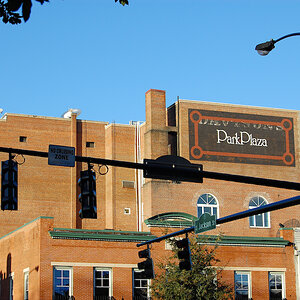


![[No title]](/data/xfmg/thumbnail/33/33356-9cfc19255e84aab13c903f781a99cf9f.jpg?1619735920)
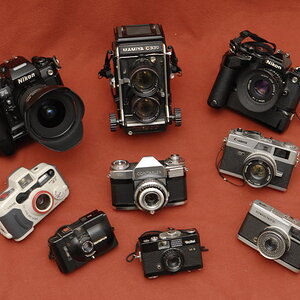

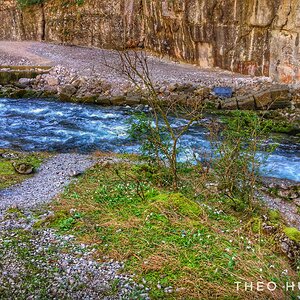

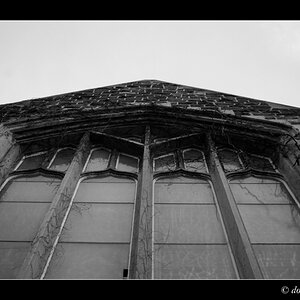

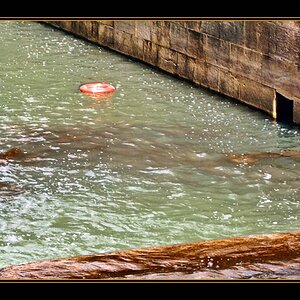
![[No title]](/data/xfmg/thumbnail/36/36395-66eaff4565ecf4245f13a9c469a9273b.jpg?1619737548)